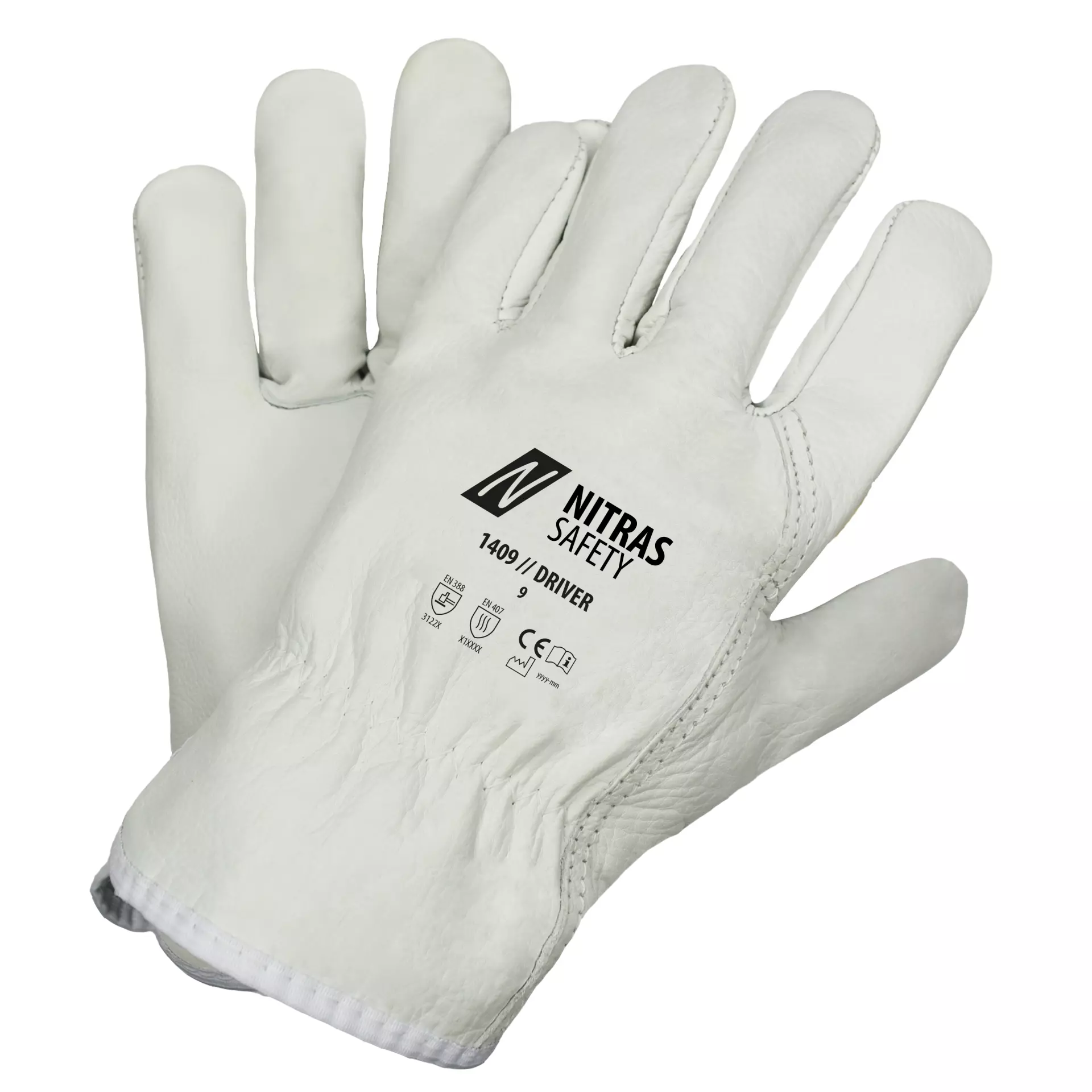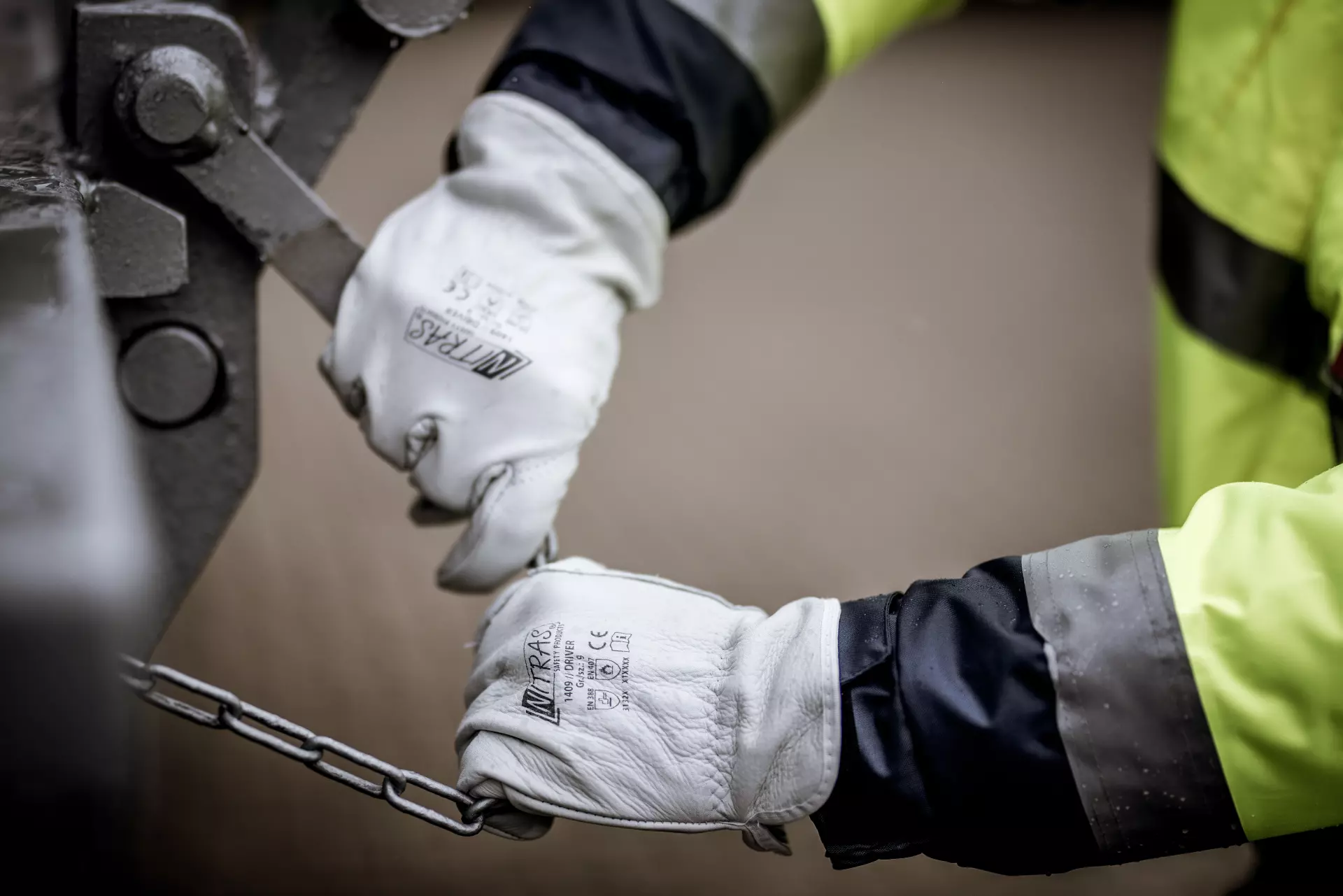

Features You'll Love

Palm Material · Cowhide Leather
The material used on the palm side of the glove, affecting grip, durability, protection level, and comfort during use.

EN 388 · Abrasion Resistance Level 3, Tear Resistance Level 2, Puncture Resistance Level 2
EN 407 · Burning Behaviour Level X, Heat Contact Level 1, Heat Convection Level X, Radiant Heat Level X, Molten Metal Resistance Level X, Metal Splash Resistance Level X
Provides good resistance against scraping, scratching, and rubbing on rough or abrasive surfaces.
Offers moderate resistance against snagging or catching on rough objects, preventing small rips from growing.
Withstands moderate force from sharp objects like heavy-duty splinters or wires.
This product was not tested for its resistance to open flames or burning behavior under the EN 407 standard. Therefore, it does not claim to offer protection against fire and should be kept away from naked flames.
This product provides short-term protection against contact with hot objects up to 100°C (212°F) for at least 15 seconds. It is ideal for brief handling of warm items in non-professional settings like home kitchens.
This product has not been tested for protection against convective heat, which is the transfer of heat through moving air or fluids. Therefore, no specific performance level for delaying heat transfer from a flame is claimed.
This product has not been tested for protection against radiant heat, the invisible heat felt from a distance like near a furnace. Therefore, it does not have a certified performance level for this specific type of intense heat hazard.
This product was not tested for resistance against molten metal splashes under the EN 407 standard. Therefore, it is not intended for use in activities like welding or foundry work where this specific hazard is present.
This product has not been tested for resistance against splashes of molten metal under the EN 407 standard. It is not intended for use in activities like welding or foundry work where this specific protection is required.
Nitras
DRIVER Cow Grain Leather Gloves, Grey, 12 pairs
DRIVER Cow Grain Leather Gloves, Grey, 12 pairs
(20)
39,81 €
Price per 12 pairs
3,32 € / pair
Choose size
Shipping fee is 7,95 € for orders under 80,00 €
Features You'll Love

Palm Material · Cowhide Leather
The material used on the palm side of the glove, affecting grip, durability, protection level, and comfort during use.

EN 388 · Abrasion Resistance Level 3, Tear Resistance Level 2, Puncture Resistance Level 2
EN 407 · Burning Behaviour Level X, Heat Contact Level 1, Heat Convection Level X, Radiant Heat Level X, Molten Metal Resistance Level X, Metal Splash Resistance Level X
Provides good resistance against scraping, scratching, and rubbing on rough or abrasive surfaces.
Offers moderate resistance against snagging or catching on rough objects, preventing small rips from growing.
Withstands moderate force from sharp objects like heavy-duty splinters or wires.
This product was not tested for its resistance to open flames or burning behavior under the EN 407 standard. Therefore, it does not claim to offer protection against fire and should be kept away from naked flames.
This product provides short-term protection against contact with hot objects up to 100°C (212°F) for at least 15 seconds. It is ideal for brief handling of warm items in non-professional settings like home kitchens.
This product has not been tested for protection against convective heat, which is the transfer of heat through moving air or fluids. Therefore, no specific performance level for delaying heat transfer from a flame is claimed.
This product has not been tested for protection against radiant heat, the invisible heat felt from a distance like near a furnace. Therefore, it does not have a certified performance level for this specific type of intense heat hazard.
This product was not tested for resistance against molten metal splashes under the EN 407 standard. Therefore, it is not intended for use in activities like welding or foundry work where this specific hazard is present.
This product has not been tested for resistance against splashes of molten metal under the EN 407 standard. It is not intended for use in activities like welding or foundry work where this specific protection is required.
Product description
Premium protective gloves crafted from cow grain leather, offering superior dexterity and contact heat protection up to 100°C for 15 seconds. These gloves feature an ergonomic design with elastic at the back of the hand and wing thumb construction for enhanced flexibility and comfort. Certified to EN 388:3122X and EN 407:X1XXXX standards, they provide reliable protection for professional use.
Product Features:
- Wing thumb design for improved mobility
- Elastic at back of hand for secure fit
- Full cow grain leather construction
- Maximum dexterity rating (Level 5)
- Contact heat protection (100°C for 15 seconds)
Technical Details:
- EN 388:3122X certification
—Level 3 abrasion resistance
—Level 1 cut resistance
—Level 2 tear resistance
—Level 2 puncture resistance
—Level X TDM cut resistance
Standards:
- EN ISO 21420:2020
- EN 388:2016+A1:2018
- EN 407:2020